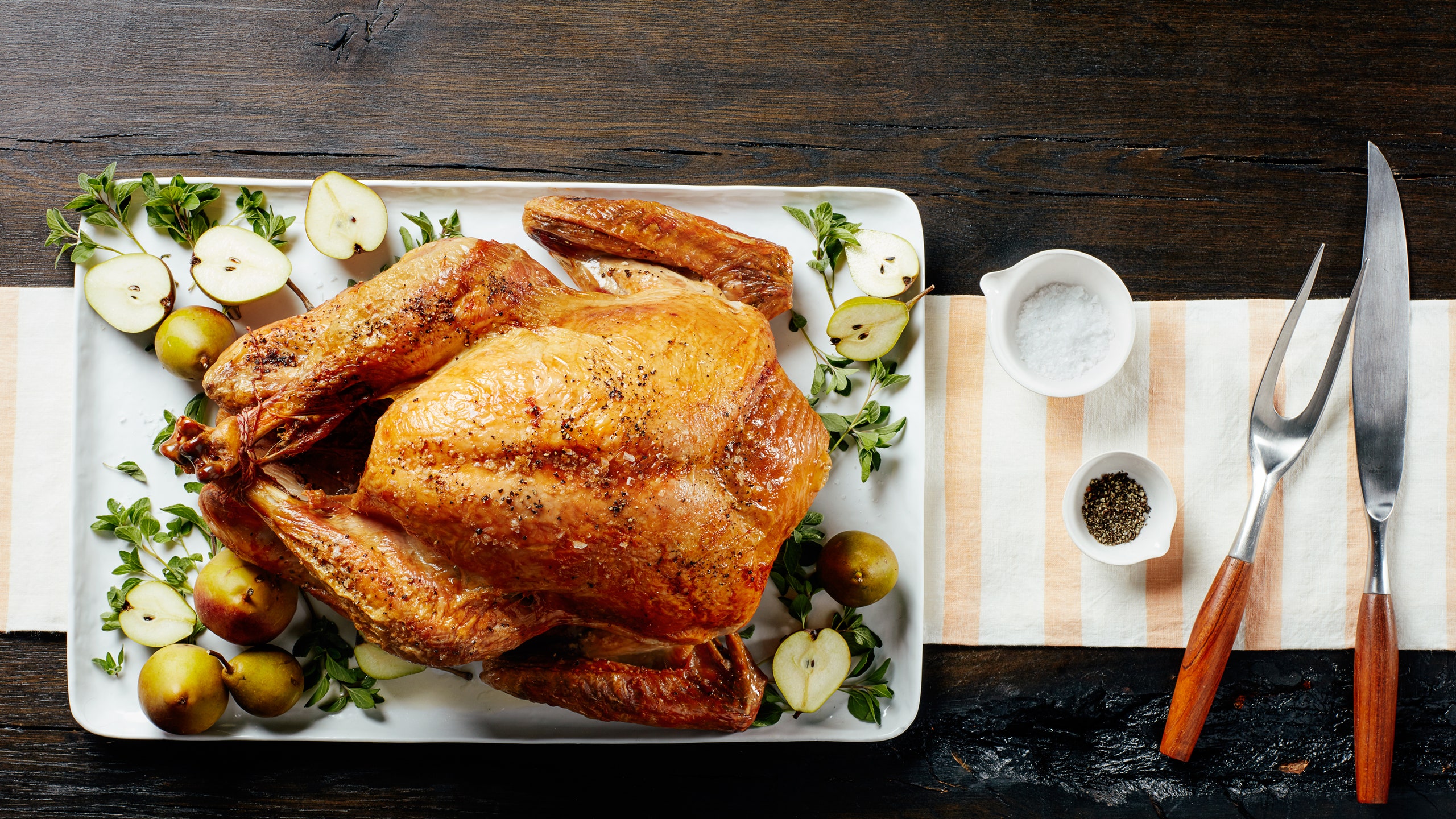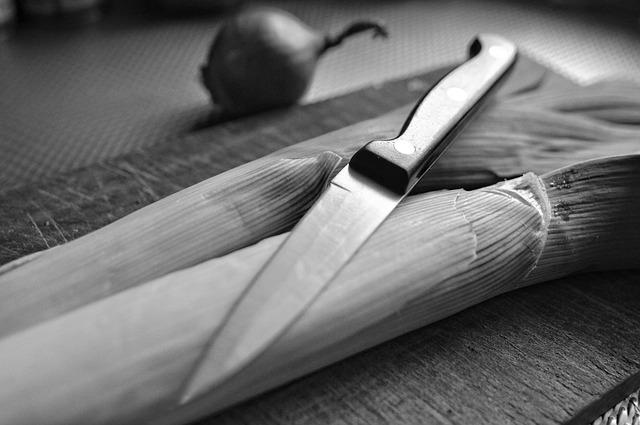
MinuteRice recently conducted a poll that found 71% of respondents used life hacks much more than before the COVID-19 pandemic. 54% claimed to have used a cooking trick. The most popular were cooking hacks, with almost three-quarters of those claiming to have tried them at least three more times before they finally got it right. The most successful cooking hacks, according to the survey, save people an average of six hours each week.
TikToker's cooking tip for measuring sticky ingredients
A sticky ingredient can leave a residue on your measuring cup. This not only makes it inaccurate but also makes cleanup easier. A TikTok account has provided a simple solution. Find out how to use anoiled measuring cup for sticky ingredients in your home kitchen. Holly shares her simple trick:
Using a blow torch to remove a cork
A blow torch might be an option for wine enthusiasts who want to remove corked wines. To get the cork out from a wine bottle, you could also try a bike pump. Pushing the cork too hard can cause damage to the bottle. A blow torch is another option, but you should be cautious as it can burn the bottle.

To chop herbs, use a cuttingboard
A cutting board can help you chop herbs more efficiently. The cutting board can help preserve the freshness of your cut herbs, unlike chopping fresh herbs directly on the countertop. Here are some tips on how to use a cuttingboard. First, use a sharp knife. You can also use kitchen scissors. You can also chop herbs in coarse pieces to preserve more flavour.
Use a blow torch for removing excess fat from your stock
A blow torch can be used to melt butter or fat from stock to give your fish soup or chicken the texture you desire. This method is not suitable for all. This method can save you lots of time. First, reduce the stock to approximately two-thirds of its original volume. Next, heat the stock with a blow torch to melt any remaining fat. The stock can be frozen in ice cube trays and freezer bags. It will stay fresh for several months. You can also make large quantities of chicken stock by using the bones and meat of the bird.
Using a blow torch to remove a coconut shell
You can smash the coconut using a pointed tool such as a knife, hammer or fork. Three ridges are found on the outer shell of coconuts. These ridges divide the shell into thirds, and then end at the point called the "butt". One ridge runs between the two eyes on the face of the coconut, while the other two run on either side of the "mouth". To break the shell you can use a knife and hammer to get the rest.

FAQ
What is the average time it takes to learn how to cook? How much time do I need?
It depends on your level of skill. Some people can master basic cooking techniques in a matter days. Some people take months to learn how to cook. Others may need to wait for years.
The person who is learning to cook can vary in the amount of time they need. Someone who has never been to the kitchen before might need more time than someone who does it regularly. Also, certain types of cooking require more experience than others. Baking is more difficult than frying.
If you want to learn how quickly you can cook, you should focus on learning a specific technique. You can then move on to the next technique once you have mastered it. It doesn't matter how long it takes to master a particular technique. Keep practicing and having fun with the whole process.
Can I learn to cook alongside my kids?
Yes! Kids love to help in the kitchen. It's fun and teaches kids responsibility as well as teamwork. Children can help with everything from washing vegetables to chopping onions. They will enjoy helping you to cook if your children are safe with knives.
How much does a culinary school cost?
Prices for Culinary School vary depending upon where you go, what program you select, and how long you stay there. The average tuition ranges from $10,000-$30,000 per year. The majority of students graduate with around $20,000 in student debt. Some programs offer scholarships, grants, or work-study opportunities.
Do I need to go to culinary school to be a chef?
No. Many chefs learned their craft on their own. Some even went on to culinary school to gain work experience. Most chefs prefer to go to culinary school to expand their professional opportunities. Culinary schools give students hands-on experience, which allows them to develop valuable skills as well as improve their culinary knowledge.
How do you get hired as a Chef?
A culinary arts degree is the first step to a career as a chef. The next step is to join a professional association like the American Culinary Federation. The ACF offers certification exams and networking opportunities.
What skills are necessary to attend culinary school
You will need to know how to cook, understand food safety regulations, and be able work under pressure in order to become a chef. Cooking classes can be taken at high schools and community colleges to learn the basics of cooking. After mastering the basics, you'll be able to apply for a job at a catering or restaurant.
What Are the Requirements To Be a Chef?
You must hold a bachelor's in culinary arts to be a chef. A series of tests must be passed by the ACF. Once you've completed these requirements, you'll receive a certificate verifying your qualifications.
Statistics
- The median pay for a chef or head cook is $53,380 per year or $25.66/hour, according to the U.S. Bureau of Labor Statistics (BLS). (learnhowtobecome.org)
- You'll be amazed that over 90% of CIA students receive scholarships and grants to finish their culinary studies. (ischoolconnect.com)
- under 10 Kids have been taught that there is special food just for them, and Fiese says that 10 percent of kids will throw a tantrum if they don't get the food they want. (washingtonpost.com)
External Links
How To
How to make a perfect eggroll
Omelets have always been a favourite food to eat for breakfast. How can you make them perfectly? I've tried many recipes and different methods but none have worked. I have some tips and tricks to help you make delicious, fluffy omelets every single morning.
It is important to know that eggs can be temperamental when making omelets. The eggs must be fresh from an organic source and kept at room temperature until they are ready to be cooked. They must be kept cool, otherwise the whites will not form properly and the yolks may become runny. This causes your omelets to look oddly colored. If you're going to cook them immediately, it is best if the eggs are still warm.
You can also separate the egg before you add it to the pan. You don't want the white to get mixed with the yolk, as this could cause the egg to curdle.
If you add the egg directly onto the stovetop, you might end up burning the bottom part of the egg, which would ruin the texture of your omelet. Instead, microwave the egg for 10 seconds before adding it to the pan. The heat from the microwave cooks the egg just enough without overcooking it.
Next, let's talk about mixing the eggs. You want to mix the eggs thoroughly before you add them. Turn the bowl upside down and grab the whisk to do this. Now shake the bowl vigorously. This way, the air inside the bowl gets whipped around and mixes the egg thoroughly.
The fun part is now - adding the milk to the mixture. First, pour half of the milk into the beaten eggs and then fold the eggs gently into the remaining milk. Don't worry if there are still streaks of egg visible; these streaks will disappear once you flip the omelet.
After you have folded the eggs, heat the oil in a pan over medium heat. Once the oil has started to sizzle, turn the heat down to low. Once the oil has gotten hot, add 1/4 cup of butter and swirl it around so that the entire pan is coated. Open the lid and sprinkle salt on the pan. Salt will prevent the omelet sticking to the pan.
Once the omelet forms, cover the pan again. Let the top side set completely. Flip the omelet with a spatula, or flip it upside down. Cook the opposite side for another minute. Take the omelet out of the pan and immediately serve.
This recipe works best with whole milk, but skimmed milk also works.